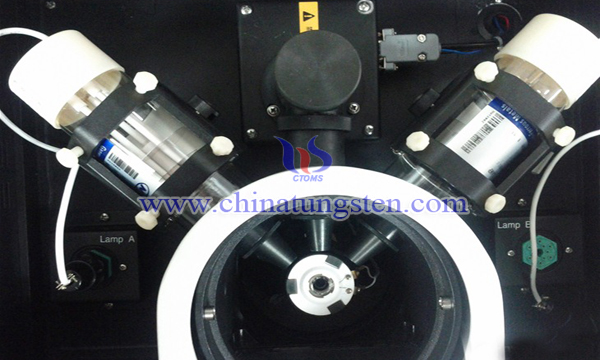Determination of impurities in Tungstate by Atomic Fluorescence Spectrometry
- Details
- Category: Tungsten Information
- Published on Thursday, 22 February 2018 15:41
Tungstic acid is acidic substances a yellow powder, tungsten trioxide containing about 90%, also contains trace tin, molybdenum, silicon, calcium, iron, manganese, potassium, sodium, chlorine, phosphorus, sulfur, arsenic, antimony, magnesium and other elements, is the raw material for the production of ammonium paratungstate.

The content of tin in tungstate is low, about 0.0010%-0.1%. The determination of tin is mainly composed of volumetric method, colorimetric method, inductively coupled plasma atomic emission spectrometry and determination of tin in tungstic acid. There are two difficulties. One is the interference of tungsten in the determination of tin, and the two is the low content of tin, which requires higher sensitivity. Capacity method sensitivity is not enough; inductively coupled plasma atomic emission spectrometry and inductively coupled plasma mass spectrometry instruments are expensive and difficult to popularize, and the matrix interference is serious. Colorimetric method is cumbersome, requiring higher analysis and longer process. The sensitivity of hydride generation atomic absorption spectrometry for the determination of tin in tungstic acid is not ideal.
The method of atomic fluorescence spectrometry for the determination of tin in tungstate can effectively improve the above deficiencies. The demonstration of this method is as follows:
1. The treatment of tungstate acid sample:
Mixed flux: analysis of pure water will remove borax (remove moisture drying in 240-300 DEG C in a muffle furnace), analysis of pure boric acid and analysis of pure zinc powder according to the mass ratio of 2:1:9 mixed evenly, and then placed in disc grinding machine grinding to 200 mesh sieve;
Melting of tungstic acid sample: weigh 0.3000g sample of tungstic acid in a porcelain crucible (8mL) pre-filled with 3-4g of the mixed flux, stir and cover 0.5g of mixed flux and 0.5g of potassium chloride, then the porcelain crucible is placed in a muffle furnace at 700 °C, the temperature is further raised to 800 °C., the heating time is 17-20 minutes, and finally the porcelain crucible is taken out and cooled to normal temperature;
2. Separation of tungsten and stannum
The cooled crucible is placed in the beaker (150mL), and 50mL volume ratio of 40% hydrochloric acid, heating leaching frit and cook until no small bubble release, then remove the porcelain crucible cooling to room temperature, into the bottle, and the volume is determined by double 100mL; rapid quantitative filter paper adding fat cotton filter, tin in the filtrate, tungsten was not soluble monomer residue in the filter paper and cotton, realizing the separation of tungsten and tin;
3. Determination:
The thiourea ascorbic acid solution was prepared temporarily. The 5g thiourea and ascorbic acid were respectively dissolved in 100mL water, and the concentrations of thiourea and ascorbic acid were all 50g/L.
Atomic fluorescence spectrometry is used to separate tungsten tin from tungsten and tin, and eliminate the interference of tungsten to tin determination. The sensitivity to tin is very high, and the accuracy of measurement is greatly improved. It can fully satisfy the determination of trace tin in tungstate. The method is economical, simple, rapid and easy to operate.
- Tungsten Oxide Manufacturer & Supplier, Chinatungsten Online: www.tungsten-oxide.com
- Tungsten News & Prices of China Tungsten Industry Association: www.ctia.com.cn
- Molybdenum News & Price: news.molybdenum.com.cn
- Tel.: 86 592 5129696; Fax: 86 592 5129797; Email: sales@chinatungsten.com



 sales@chinatungsten.com
sales@chinatungsten.com